Do you have a question about the Sony CECH-2501A and is the answer not in the manual?
Tips for playing video games to minimize seizure risk, like using well-lit areas and taking breaks.
Information on radio wave impact, US export administration regulations, and national export control.
Guidelines for safe operation, handling, and electrical safety of the system.
Safety advice for controllers and guidelines for safe AC power cord usage.
Advice on avoiding modifications, network features, moisture condensation, and cleaning.
Guidelines for handling discs, notes on compatibility, and preventing damage.
Links to the online user's guide and information on system software updates.
How to use the PS button, directional buttons, and other buttons to navigate the interface.
Labels for system parts and the layout of the DUALSHOCK®3 wireless controller.
Various connection methods for SD/HD video and troubleshooting no-video issues.
Step-by-step instructions for connecting the Ethernet cable and AC power cord.
Procedures for initial setup and helpful hints for HDMI and text entry.
Visual comparison of HD and SD screen resolutions to understand differences.
Information on HDMI, Component AV, S VIDEO, and AV cables.
Steps to resolve issues when video is not displayed on the screen.
How to adjust audio output settings to match your audio device or TV.
Supported audio channels and examples of connecting audio devices.
Explanation of power indicator lights and using the PS button for power control.
Steps for pairing the controller with the system and assigning controller numbers.
Instructions for charging the controller and checking its battery charge level.
Steps for inserting discs, starting playback, and ejecting discs.
List of supported file formats and notices regarding USB device usage.
Details on software compatibility and steps to quit a game during play.
How to change controller settings and manage saved game data.
Diagrams illustrating typical wired and wireless network configurations.
Detailed steps for configuring wired and wireless internet connections.
Steps to adjust wireless LAN settings, security, and test the internet connection.
Details on configuring IP Address, DNS, MTU, Proxy Server, and UPnP settings.
Using the browser, viewing the user's guide, and creating a PlayStation®Network account.
Different update methods and how to check the system software version.
Step-by-step text entry guide and explanation of on-screen keyboard keys.
Changing security settings, game/content levels, and other security options.
Safety precautions for HDD replacement and the importance of backing up data.
Methods for backing up data and initial steps for removing the hard disk.
Step-by-step guide for removing the HDD and essential handling precautions.
Steps to install the HDD and the necessity of reinstalling system software.
Steps for downloading update data and installing the system software.
Procedures for restoring data in a single operation or restoring selected files.
Procedures for transferring data and restoring the PS3 system to default settings.
Troubleshooting steps for system not turning on, no picture, or distorted picture.
Diagnosing network connection errors and no sound issues.
Troubleshooting unrecognized discs, USB devices, and network error messages.
Troubleshooting controller not functioning, battery issues, and slow response.
Addressing system noise, screen freezes, and content the system doesn't recognize.
Specifications for CPU, GPU, memory, hard disk, networking, and controller.
Information on compatible Blu-ray, DVD, and CD media types.
Understanding region codes and important notices for various disc types.
Safety precautions for batteries, storage recommendations, and removal steps.
Understanding warranty coverage, conditions that void it, and SCEA's liability.
Acknowledgement of service terms, data loss risks, and user responsibilities.
Copyright notices for various software components and hardware features.
Tips for playing video games to minimize seizure risk, like using well-lit areas and taking breaks.
Information on radio wave impact, US export administration regulations, and national export control.
Guidelines for safe operation, handling, and electrical safety of the system.
Safety advice for controllers and guidelines for safe AC power cord usage.
Advice on avoiding modifications, network features, moisture condensation, and cleaning.
Guidelines for handling discs, notes on compatibility, and preventing damage.
Links to the online user's guide and information on system software updates.
How to use the PS button, directional buttons, and other buttons to navigate the interface.
Labels for system parts and the layout of the DUALSHOCK®3 wireless controller.
Various connection methods for SD/HD video and troubleshooting no-video issues.
Step-by-step instructions for connecting the Ethernet cable and AC power cord.
Procedures for initial setup and helpful hints for HDMI and text entry.
Visual comparison of HD and SD screen resolutions to understand differences.
Information on HDMI, Component AV, S VIDEO, and AV cables.
Steps to resolve issues when video is not displayed on the screen.
How to adjust audio output settings to match your audio device or TV.
Supported audio channels and examples of connecting audio devices.
Explanation of power indicator lights and using the PS button for power control.
Steps for pairing the controller with the system and assigning controller numbers.
Instructions for charging the controller and checking its battery charge level.
Steps for inserting discs, starting playback, and ejecting discs.
List of supported file formats and notices regarding USB device usage.
Details on software compatibility and steps to quit a game during play.
How to change controller settings and manage saved game data.
Diagrams illustrating typical wired and wireless network configurations.
Detailed steps for configuring wired and wireless internet connections.
Steps to adjust wireless LAN settings, security, and test the internet connection.
Details on configuring IP Address, DNS, MTU, Proxy Server, and UPnP settings.
Using the browser, viewing the user's guide, and creating a PlayStation®Network account.
Different update methods and how to check the system software version.
Step-by-step text entry guide and explanation of on-screen keyboard keys.
Changing security settings, game/content levels, and other security options.
Safety precautions for HDD replacement and the importance of backing up data.
Methods for backing up data and initial steps for removing the hard disk.
Step-by-step guide for removing the HDD and essential handling precautions.
Steps to install the HDD and the necessity of reinstalling system software.
Steps for downloading update data and installing the system software.
Procedures for restoring data in a single operation or restoring selected files.
Procedures for transferring data and restoring the PS3 system to default settings.
Troubleshooting steps for system not turning on, no picture, or distorted picture.
Diagnosing network connection errors and no sound issues.
Troubleshooting unrecognized discs, USB devices, and network error messages.
Troubleshooting controller not functioning, battery issues, and slow response.
Addressing system noise, screen freezes, and content the system doesn't recognize.
Specifications for CPU, GPU, memory, hard disk, networking, and controller.
Information on compatible Blu-ray, DVD, and CD media types.
Understanding region codes and important notices for various disc types.
Safety precautions for batteries, storage recommendations, and removal steps.
Understanding warranty coverage, conditions that void it, and SCEA's liability.
Acknowledgement of service terms, data loss risks, and user responsibilities.
Copyright notices for various software components and hardware features.
| Model | CECH-2501A |
|---|---|
| Category | Game Console |
| Manufacturer | Sony |
| Storage Capacity | 160 GB |
| Release Year | 2010 |
| Color | Black |
| CPU | Cell Broadband Engine |
| Connectivity | Ethernet, Wi-Fi, Bluetooth |
| Disc Drive | Blu-ray Disc |
| USB Ports | 2 x USB 2.0 |
| Type | Home video game console |
| Release Date | September 2010 |
| Dimensions | 290 × 65 × 290 mm |
| GPU | RSX 'Reality Synthesizer' |
| RAM | 256 MB |
| VRAM | 256 MB |
| Ports | HDMI, USB 2.0 |
| Optical Drive | Blu-ray/DVD |
| Video Output | 480i, 480p, 720p, 1080i, 1080p |
| Audio Output | HDMI |
| Backward Compatibility | No |
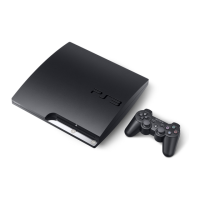
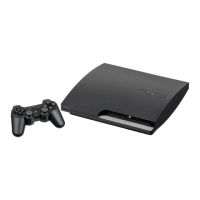

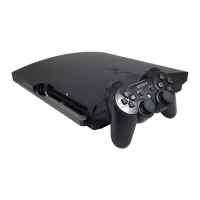


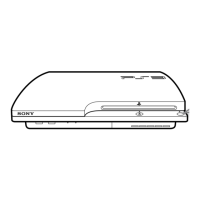
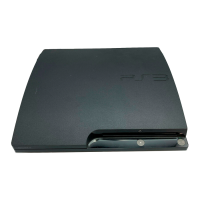



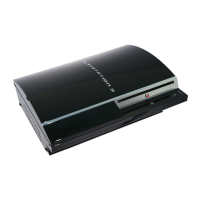
